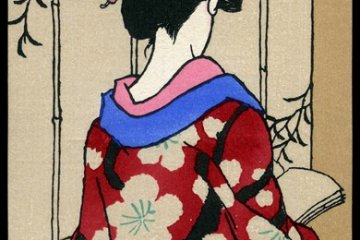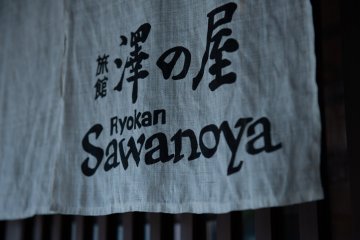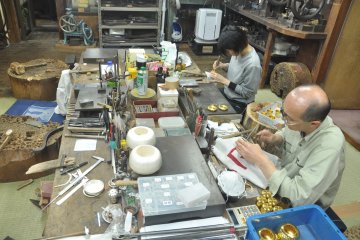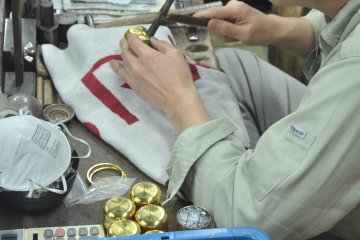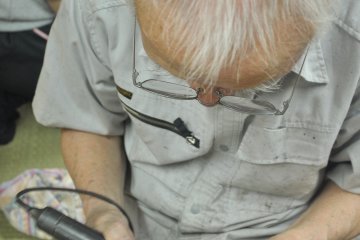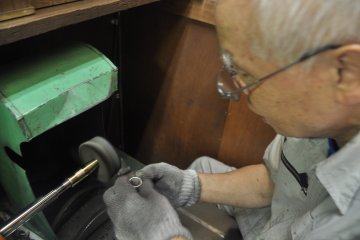Ishiguro Kounan is a silverware master who has been practicing his profession for more than 50 years. His silverware workshop is located near the Ueno neighborhood of northeastern Tokyo. Kounan's small but well-equipped workshop is a striking contrast to the mega factories around Tokyo and in Kanagawa prefecture that churn out mass-produced goods of a similar nature.
During my visit, four people were working in the studio. Among them, two young ladies and one middle-aged man were working on gold while another much older man was working on silver. With the help of Ishiguro’s daughter-in-law’s interpretation, I approached the silverware station and observed closely the ongoing work. Ishiguro was in the process of making a teapot. The raw material was only a piece of flat silver. Ishiguro proceeded to demonstrate to me how it was burned, formed into a round shape, and then hammered into the final form of a teapot. After that, decorative patterns were etched into the silver with a hammer and chisel. To thoroughly decorate even a small piece of silverware demands lots of careful measuring and hammering. The master in front of me executed this fluently, which reflects his years of experience in working with silver.
Kounan also demonstrated the making of Tama-arare , a signature character of his handmade metalwork. Countless small projections are created by hammering the area around them. It was as if a needle from underneath jutted a tiny spot out when he did the hammering. There is no machine than can replicate this process. It is just pure handiwork and educated guessing of the position of the points, which require lots of attention and experience. The finished product has an intricately patterned surface. Ishiguro is one of only a handful of artisans in Japan who still possesses this skill.
Ishiguro says there are much fewer people today working as professional goldsmiths. He has personally been to other countries to observe how this industry works in other places. He states that it is hard for Japanese silverware products to secure a place in European market. They already have their own style of metal ware products, which is more diverse and the skills already very sophisticated, although they are not necessarily all hand made. Products that have to be handmade have both advantages and disadvantages for the industry in Japan. If craftsmen do not stick to the stringent rules of handicraft products, they would lose the recognition and the titles awarded by the government. Yet handmade products are naturally pricier, which reduces the incentive of buying them. It is vital to preserve the skills of this tradition, while also teaching customers of the practical and artistic value of the individual gold and silver creations.



